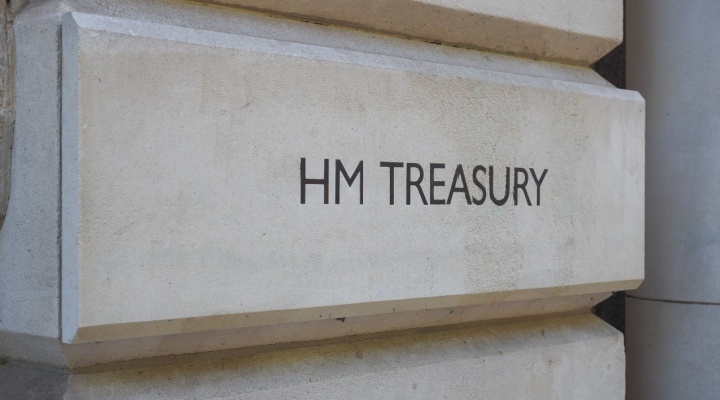Welcome to our latest update of the investment market. We take a quick look at some of the key factors that influenced the stock market in September and could continue to do so over the coming months.
In September, escalating trade tensions have continued to have an impact on the global economy. It’s led to the OECD cutting its global forecast for 2019. The forecast has been cut from 3.2% to 2.9%, which would make 2019 the weakest annual performance since the recession a decade ago. The negative outlook is expected to continue into 2020, with the OECD cutting the forecast from 3.4% to 3%.
UK
The good news is that concerns of the UK slipping into a recession have eased. The economy posted its strongest monthly growth since January at 0.3%.
However, Britain’s manufacturers recorded the sharpest drop in factory output in seven years, according to the latest PMI. Worryingly, it also suggested that supply chains are rerouting away from the UK.
When it comes to company focused news, it’s Thomas Cook that dominated headlines in September. The 178-year-old tour operator collapsed into liquidation, with around 9,000 UK staff facing redundancy. It also left thousands of holidaymakers stranded abroad and many more potentially missing out on holidays they’d booked in advance. The firm struggled with significant debts and rescue talks failed to produce a solution.
It’s not just Thomas Cook that’s been struggling either:
- Next shares fell after it warned an unseasonably warm September will affect trading. The firm also states prices will go down in the event of a no-deal Brexit, but this is not its preferred outcome.
- The UK’s biggest car dealer, Pendragon, also announced it will close 22 of its 35 sores, with 300 job losses. Its auditors blamed Brexit.
As highlighted above, Brexit remains a key issue. The deadline day of 31st October is now looming and whether the UK will leave without a deal, or leave the EU at all, is still in question.
The big news in September was the ruling on the proroguing of parliament. Prime Minister Boris Johnson’s decision to prorogue parliament for five weeks in order to avoid Brexit scrutiny earned criticism, including that it was unlawful. The UK Supreme Court upheld this view in September, with MPs then returning to work. The outcome means a no-deal Brexit is less likely, but it’s still not off the table.
Bank of England Governor Mark Carney also commented on Brexit. He revealed that 75% of companies think they’re as ready as they can be for Brexit. The bank has also scaled back its forecasts for worse case Brexit but continued to warn that a disorderly Brexit is likely to be a big shock.
Of course, the ongoing uncertainty around Brexit continues to have an effect. However, many businesses are taking steps to prepare. Shares in JD Sports jumped after it opened a warehouse in Belgium, whilst BMW revealed it will close its Oxford factory for two days as part of the firm’s preparations.
Europe
Looking out to Europe, manufacturing statistics continue to be negative too. There was a stark slump in Germany, often seen as the stalwart of the bloc. But there was also falling output in Spain, Italy, Ireland and Austria. This, along with many other factors, played a role in the European Central Bank (ECB) decision to back easing again.
The ECB cut its deposit rate and announced plans to restart its asset purchase program. The move comes just a year after the central bank stopped its quantitative easing program and suggested it would begin increasing interest rates again.
US
After months of President Donald Trump urging the Federal Reserve to cut interest rates in a bid to boost lending and the economy, the Fed reacted with a 0.25% cut. However, Trump still isn’t satisfied with the action taken, stating it doesn’t go far enough. He went as far to say in a tweet that the Fed had ‘no guts, no sense, no vision’.
Figures from the Institute of Supply Management reported US manufacturing shrank in August, joining a wider global slowdown. National factory activity decreased to 49.1, where a reading below 50 indicates a contraction in manufacturing, which accounts for about 12% of the US economy. The slowdown has been linked to the ongoing trade war with China.
Asia
Despite the overall gloomy economic outlook, Asia does have some bright spots.
Protests in Hong Kong have had a significant impact on China over the last few months. The extradition law that sparked the mass protests has now been canned, leading to Hong Kong shares rising more than 4% early on in the month.
Another ongoing issue affecting China has been the trade war with the US. Whilst nothing has yet been agreed, comments from China’s commerce ministry stated that talks have gone ‘very well’ and indicated progress was being made ahead of October’s visit to the US. Shortly after the comments were made, Trump announced he’s delaying a planned tariff hike on $250 billion Chinese goods for two weeks as a ‘gesture of goodwill’. For those affected by the trade war, it could signal that a solution can be found.
It’s not all good news in Asia though. Inflation in South Korea hit zero for the first time ever. It indicates weakening global demand and tensions, with investors deterred.
Middle East
The big news in the Middle East in September was the Saudi oil attack. It was suggested that the attack could disrupt the global supply of crude oil in the short and medium term. Brent crude ended the day up 14.6%, the biggest move since the Brent crude contract was created in the 80s. However, oil prices normalised faster than first anticipated once the full extent of the damage had been assessed.
The attack did highlight the influence of global supply chains. Cruise operator Carnival, for example, dropped 3% in trading as it was expected outgoings would rise whilst demand would fall as households faced greater financial pressure.
Keep an eye on our blog for more investment updates.
If you have any concerns about your investment portfolio in light of recent events, please get in touch.
Please note: The value of your investment can go down as well as up and you may not get back the full amount you invested. Past performance is not a reliable indicator of future performance.





